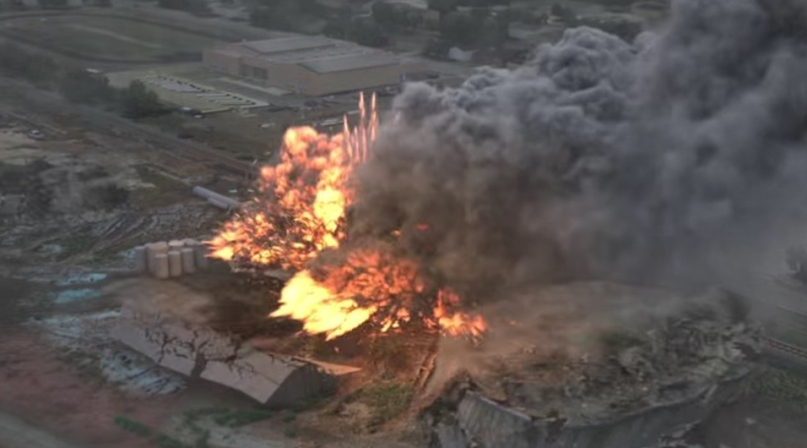Risk management rules may change
Upcoming Events
Related News

Proposed EPA rules would impact county emergency planning and water-wastewater treatment facilities
When the April 2013 West, Texas fertilizer explosion killed 15 people and destroyed or damaged over 150 homes, safety practices at chemical facilities came under almost immediate scrutiny. Four months later, on Aug. 1, President Obama issued Executive Order 13650 — Improving Chemical Facility Safety and Security — which required federal agencies to tighten chemical security programs.
Subsequently, EPA has released proposed rules to tighten existing safety programs at chemical facilities that use chlorine, ammonia and various flammable chemicals. A number of industries are impacted by the proposal such as environmental quality programs, agricultural chemical distributors, utilities and water-wastewater treatment systems.
Local governments could be most affected on two fronts: First, as owners and operators of publicly owned water-wastewater treatment facilities, local governments would be regulated through new requirements on facilities. Second, since local governments often serve as the nation’s first line of defense before and after disasters strike, changes to emergency protocols would directly impact them. Under the new rule, regulated facilities would be required to consult individually with emergency managers on a yearly basis for notifications and tabletop exercises, and every five years for field exercises.
The proposed rule would expand local government responsibilities without providing funding to implement the more complex requirements. Added compliance costs were noted in joint comments on the proposed rule, Accidental Release Prevention Requirements: Risk Management Programs Under the Clean Air Act, filed by NACo, the National League of Cities and the U.S. Conference of Mayors on May 13.
NACo Needs Your Input
Even though the public comment period for the proposed rule is closed, NACo, along with the National League of Cities and U.S. Conference of Mayors, plans to meet with the White House’s Office of Information and Regulatory Affairs on cost implications of the proposed rule. NACo is interested in whether the proposed rule would impact your county. Specifically, ask your emergency manager whether the cost estimates listed in Slide No. 18 of the EPA presentation (see this article online for link to slide) are accurate for implementation. And, if not, why?
Some Things to Think About
• How many facilities within the county would be regulated under this proposal?
• If your emergency responders needed to be involved in each of these activities — notification and tabletop (annually) and field exercises (every five years) — would the emergency managers be able to comply with existing staff? If not, how many more staff would be needed?
• Estimated costs to comply (from an emergency manager perspective) with these rules?
Attachments
Related News

MAHA Commission releases federal strategy outlining next steps in childhood chronic disease prevention
On September 9, the U.S. Department of Health and Human Services (HHS) released the Make America Healthy Again (MAHA) Commission’s new Make Our Children Healthy Again Strategy, following the earlier MAHA Report published in May 2025. The strategy builds on the assessment’s findings regarding four key drivers of childhood chronic disease: poor diet, chemical exposure, lack of physical activity and chronic stress and overmedicalization.
Paid training program helps staff a county park system
Modeled on the Civilian Conservation Corps, Erie County, N.Y.'s training and internship program aims to help fill vacant staff positions while offering the necessary training.
Eastern Tennessee counties collaborate on nuclear energy ambitions
Decades after the Manhattan Project, cooperation among Roane, Anderson and Knox counties in Tennessee drives toward a high profile for nuclear power.